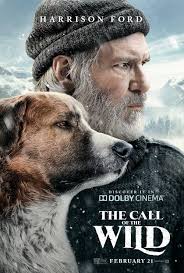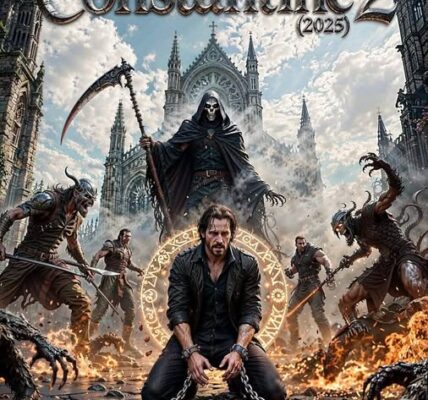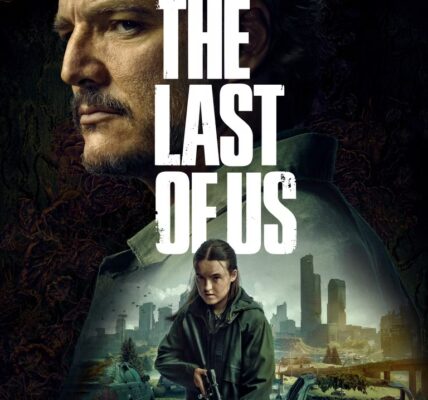Movie Overview
- Title: The Call of the Wild (2020)
- Release Date: February 21, 2020 (USA)
- Genre: Adventure / Drama (family-oriented, nature adventure)
- Director: Chris Sanders
- Main Cast: Harrison Ford (John Thornton), Omar Sy (Perrault), Cara Gee (Françoise), Dan Stevens (Hal), Karen Gillan (Mercedes), Bradley Whitford (Judge Miller), and Colin Woodell (Charles)
- Where to Watch: It was released in theaters (USA) on February 21, 2020. For streaming or rental, check platforms such as Apple TV, Amazon, etc., depending on your region.
1. Plot Summary
Set during the 1890s Klondike Gold Rush, The Call of the Wild follows Buck, a large, gentle dog (a mix of St. Bernard and Scotch Shepherd), who lives a pampered life in California with Judge Miller. One night, Buck is stolen and sold, eventually ending up in the Yukon where sled dogs are in demand.
Along the way Buck is first owned by Perrault and his assistant (Françoise), who treat him kindly and help him adjust to the rigors of sled work. He learns about leadership, hardship, teamwork, and the wild instinct inside him. Meanwhile, John Thornton (Harrison Ford), a solitary, grief-worn man in the Yukon, becomes Buck’s final master. Their bond becomes central: Buck helps Thornton, and in return Thornton offers Buck friendship, purpose, and a home of sorts in the wild.
Buck also encounters cruelty (from a dog-team leader Spitz, and later from Hal, Mercedes, Charles) and danger in the wilderness: the brutality of nature, harsh weather, ice, moral choices of humans, etc.
The story is about Buck’s transformation: from spoiled domestic pet to sled dog under harsh masters, then to leader, and ultimately finding his place between civilization and wilderness with Thornton.
2. Notable Elements
What makes this movie stand out — both its successful moments and where it falters.
Strengths / What’s Memorable
- Visuals & Scenery: The wilderness scenes are beautifully rendered: snowy landscapes, the Yukon frontier, harsh natural beauty. Cinematography by Janusz Kamiński is a highlight.
- Harrison Ford’s Performance: Ford brings gravitas to John Thornton. His character has sorrow (loss of a son, estranged family) and carries emotional weight. His narration adds a warm, rugged soul to the film.
- Moments of Emotional Connection: Scenes where Buck bonds with Perrault and Françoise, or when Buck saves someone, or confronts Spitz, give real emotional pull. Those are well paced.
- Music / Score: The soundtrack by John Powell is widely praised, helping to evoke mood, suspense, and awe of nature.
Shortcomings / Weaknesses
- CGI Animals / “Uncanny Valley”: Many critics pointed out that Buck (and other animals) are CGI, and that often their faces / expressions / motions are close but not fully convincing. Sometimes this undercuts emotional immersion.
- Tone Fluctuations: The movie sometimes shifts oddly between family-friendly adventure, moments of sadness, danger, and back to lightness. That uneven tone can make it hard to know what audience it is best targeting.
- Plot Simplification / Departure from the Novel: For viewers familiar with Jack London’s original, some elements are simplified or altered. Some expect darker, more rugged, more morally ambiguous content which this version tones down.
- Pacing & Stakes: Some critics felt that certain dramatic moments don’t build up enough tension, or that some scenes (e.g. with Hal/Mercedes) serve more as spectacle than real character development.
3. Themes & Messages
Here are the themes the movie explores, and how they relate to sentiments (though not specifically holiday, but still meaningful in many contexts):
- Belonging & Transformation: Buck’s journey is about finding where he best belongs. He transforms physically, mentally, emotionally — from a pet oblivious of hardship to a leader, a companion, and a creature connected to nature.
- Nature vs. Civilization: The tension between domesticated life and wild instinct—how much human comfort can one have, how much primal freedom, and how one learns or re-discovers instinct, survival, respect for nature.
- Friendship, Compassion, Redemption: Human kindness matters—Perrault, Thornton, Françoise show compassion; Buck responds to kindness; tender relationships help heal wounds (especially Thornton’s loss).
- Courage & Endurance: Hardship, danger, moral choices—Buck and Thornton both endure challenges, cold, danger, cruelty, and must summon courage.
- Legacy & Loss: Thornton’s grief over family loss, as well as the losses Buck faces, show up. There’s a sense of what one leaves behind, what one salvages, and growth through adversity.
While the story isn’t holiday themed, it carries universal values (loyalty, bravery, love of nature, finding home) which resonate with many sentimental or reflective seasons or moods.
4. Personal Impressions
What I liked, what I felt didn’t quite work, and my overall feeling.
What I liked
- The natural setting and visuals are impressive. I enjoyed vast snowy landscapes, sense of wilderness, danger, beauty. It’s a film that feels more immersive when nature is involved.
- Ford’s performance is solid; he gives John Thornton enough depth so that the bond between man and dog feels earned, not just saccharine.
- The emotional arcs: Buck’s progression, the moments of rescue or connection, are satisfying. There are scenes that genuinely tug at the heart.
- Some scenes are thrilling: when Buck is abused; when Buck is learning; when he battles Spitz; scenes of sled runs across ice.
What I felt less good about
- The CGI, especially Buck in certain moments, is distracting. Sometimes the balance between animal realism and digital artifice leans too far into the latter.
- The uneven tone: the film sometimes struggles between wanting to be a family-friendly adventure and wanting to have more mature or darker stakes. This can leave some viewers unsure of whether it is for kids, families, or more grown-ups.
- Some character arcs are thin. Hal, Mercedes, and Charles as antagonists are more caricature than deeply developed; their motivations are somewhat obvious, with limited nuance.
- There are points where scenes seem included more for spectacle than thematic weight; it sometimes feels like the film wants to hit all the expected beats rather than trust fewer moments more deeply.
5. Audience Recommendations
Who would especially enjoy this movie, and for what mood:
- If you like nature adventure films, or stories about animals, especially dogs. Buck’s journey is good for those who enjoy a mix of adventure, drama, and uplifting arcs.
- Fans of classic literature adaptations: even with changes, this gives a new cinematic take on Jack London.
- Viewers who enjoy emotionally warm films that also have danger, but not excessively graphic. Families with older children might appreciate it.
- Harrison Ford fans will enjoy seeing him in a more contemplative, rugged role. Also people who like visual effects and landscapes will find much to like.
Less good if:
- You demand perfect realism in animals or dislike CGI noticeable effects.
- You prefer films with consistently serious tone or strong moral ambiguity.
- You want a very faithful adaptation of the novel; some purists may be disappointed with the changes.
6. Conclusion & Rating
In conclusion, The Call of the Wild (2020) is a heartfelt, visually beautiful adaptation that brings forward a familiar and beloved story with earnestness and cinematic flair. It doesn’t always land perfectly — the CGI is sometimes noticeable, the tone drifts, and some character development is shallow — but it succeeds enough in its emotional core, its adventure, and its themes of loyalty, nature, and finding one’s place, to make it worthwhile.
Final Recommendation: If you’re in the mood for an adventure with your heartstrings pulled a little, with beautiful landscapes, a noble dog, and a rugged, warm-hearted human bond, this film delivers.
Star Rating: ★★★★☆ (4 out of 5 stars)




